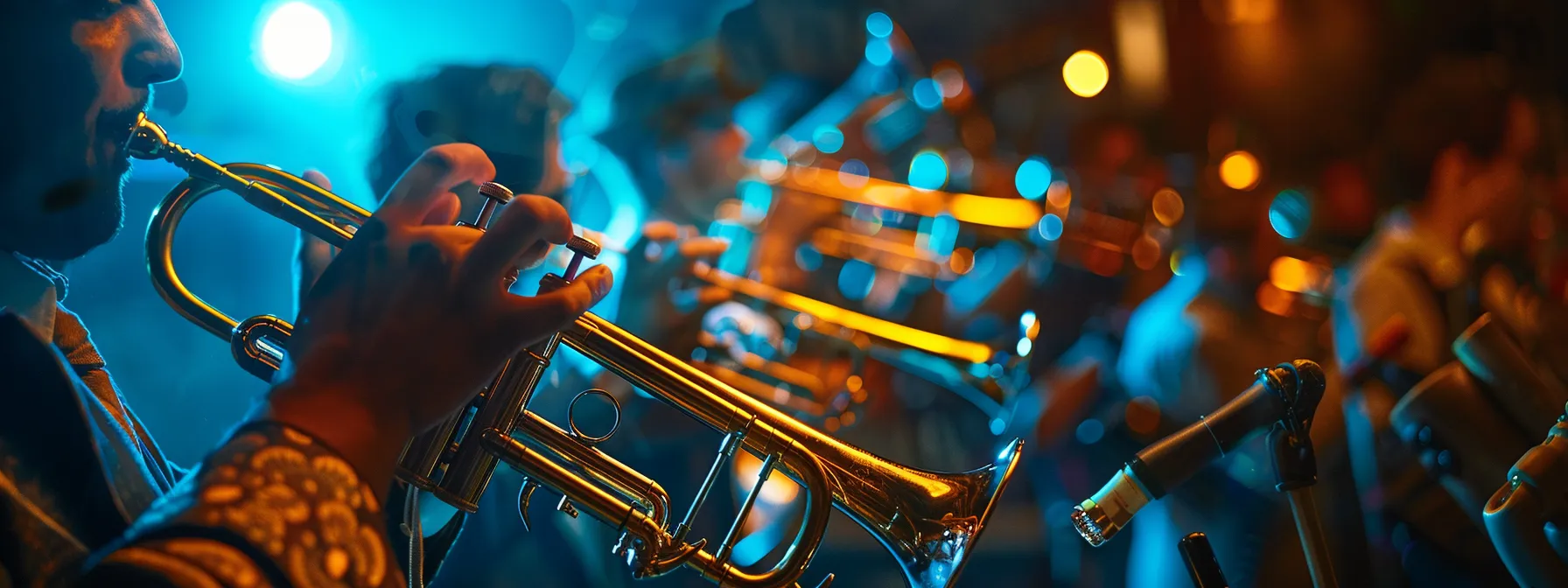Brass Instruments Shaping the Big Band Musical Landscape


Brass instruments play a vital role in big bands, often overlooked by those new to the genre. Understanding how the trumpet and trombone sections contribute to the overall sound can enhance your appreciation for this musical style. In this article, you will discover the functions of each brass section, how they build harmonic and rhythmic foundations, and the techniques used in brass arrangements. By exploring these elements, you’ll gain insights into how brass creates energy and texture in big bands, helping you connect more deeply with this dynamic form of music.
Defining the Standard Big Band Brass Section

The brass section of a big band typically features trumpets and trombones, laying a foundation for the ensemble’s sound. You’ll notice their arrangement on the bandstand plays a crucial role in the dynamics, ensuring a balanced volume across the section. Topics like the significance of section size and voicing will connect with the influence of legends like Thad Jones and Stan Kenton during swing time and jazz fusion genres.
Typical Instrumentation for Trumpets and Trombones
The instrumentation for trumpets and trombones in a big band typically includes four to five trumpets and four trombones, creating a rich, cohesive sound. This arrangement allows for the execution of various styles, ranging from the lively rhythms of ragtime to the smooth tones found in jazz genres that feature icons like Louis Armstrong. Understanding the concept of transposition is essential when working with these instruments, as it helps you navigate the different keys and ensures the ensemble maintains harmonic integrity and unity in performance.
Physical Arrangement on the Bandstand
The physical arrangement of the brass section on the bandstand plays a vital role in achieving harmony and ensuring balance across sound dynamics. When positioned correctly, the trumpets and trombones can blend seamlessly with other instruments, such as the bass and cymbals, enhancing the overall performance. This setup becomes particularly important in various jazz styles, including cool jazz, where the subtleties of each instrument, much like the interplay seen in performances featuring Gene Krupa on drums, contribute to the richness of the musical experience.
Balancing Volume Across the Brass Section
Balancing volume across the brass section is essential for achieving a harmonious sound in big bands, particularly in genres like funk and swing music. When the timbre of trumpets and trombones blends well, it enhances the overall performance, allowing the rhythm section and vocal jazz elements to shine through. Proper positioning and attention to dynamics ensure that every note is heard clearly, creating an engaging experience for both the musicians and the audience.
The Significance of Section Size and Voicing
The significance of section size and voicing in a big band brass section cannot be overstated. Influenced by legendary figures like Count Basie, the arrangement of jazz trombones and trumpets allows for an engaging balance of sound. Each instrument’s role, whether alongside a clarinet in traditional jazz or in more dynamic chamber music settings, highlights the importance of thoughtful voicing, enabling the ensemble to achieve both depth and clarity in their performance.
The brass section sets the stage, but it is the trumpets that ignite the crowd’s spirit. Their calls cut through the air, driving the energy of the big band forward, inviting you to feel the pulse of the music.
Trumpet Section Functions in Driving Big Band Energy

The trumpet section plays a critical role in driving the energy of a big band, embodying the essence of dance music as seen in the works of legends like Glenn Miller and Duke Ellington. You will learn about the significance of the lead trumpet position, how section trumpets support the melody, and the impact of high note specialists. Additionally, the use of mutes and various effects will be explored, alongside the vital trumpet roles in shout choruses that create vibrant, unified moments, reminiscent of Johnny Hodges‘ contributions in jazz.
Understanding the Lead Trumpet Position
The lead trumpet position in a big band is vital for establishing the group’s overall sound and energy. As you work with the ensemble, you’ll notice that the lead trumpet often carries the melody, setting the tone for the performance. This role requires not only technical skill but also a strong musical presence, similar to how Vincent Herring showcases his artistry on the saxophone, driving the dynamics and connecting with both the rhythm section and the audience.
Furthermore, understanding the nuances of the lead trumpet position involves mastering various techniques, such as the use of mutes and effective breath control. You may find that using a ligature correctly can influence your sound and projection, essential for blending within a big band context. Additionally, the coordination between the lead trumpet and sections like the flute or marching band instruments can greatly enhance the performances.
Section Trumpets Supporting the Melody
The section trumpets in a big band play a vital role in supporting the melody, enhancing the overall musical texture. You will often hear these instruments, especially under the influence of legends like Buddy Rich and Artie Shaw, providing rich harmonies and vibrant counterpoints that elevate the lead lines. When combined with flugelhorns, the warm sound adds a layer of sophistication, particularly evident in classic pieces like “Sophisticated Lady,” where the expressive use of vibrato helps convey the song’s emotional depth.
High Note Specialists and Their Impact
High note specialists, often exemplified by musicians like Harry James, bring a unique energy to big bands, significantly influencing the overall sound and performance. Their ability to effortlessly hit soaring notes captivates audiences and enhances the excitement within pieces, dramatically elevating the brass section’s presence. This capability not only strengthens the melodic lines but also serves as a catalyst for jazz improvisation, creating dynamic interactions that resonate with the spirit of soul music and the rich textures found in arrangements featuring instruments like the French horn.
Mutes and Effects Used by Trumpet Players
Mutes and effects play an essential role in shaping the sound of the trumpet section, enhancing its contribution to the overall energy of the big band. You may notice how trumpet players use different mutes to alter the pitch and tone, creating a spectrum of effects that complement melodies played by instruments like the tenor saxophone and the alto. Renowned musicians such as Maynard Ferguson have utilized these techniques to energize performances, making the horn section‘s sound more dynamic and engaging for the audience.
Trumpet Roles in Shout Choruses
In shout choruses, trumpets play an essential role in energizing the ensemble with their dynamic arrangement and bold sound. These sections often feature fast-paced bebop or hard bop lines, showcasing the trumpets’ ability to deliver high-energy riffs that excite both musicians and listeners alike. During a jam session, you’ll find that trumpets frequently utilize octave leaps to create vibrant contrasts, allowing the brass section to drive the overall energy of the performance.
The brilliance of the trumpet section lights up the room, but the trombones wait patiently, ready to add their depth. Their rich sounds create layers that complete the band’s energy, inviting the listener to appreciate the full texture.
Trombone Section Contributions to Big Band Texture

The trombone section significantly enriches the texture of big bands through its unique roles. The lead trombone often handles melodic and harmonic duties, while inner voices add harmonic richness that complements the band’s overall sound. The bass trombone anchors the low end, and techniques like slide and glissando effects introduce dynamic flair, with trombone solos offering distinct color. By examining these functions in the context of iconic performances featuring musicians like Lionel Hampton and exploring the use of Vandoren equipment alongside the alto saxophone, you will appreciate the trombone‘s crucial role in big band instrumentation.
The Lead Trombone‘s Melodic and Harmonic Duty
The lead trombone in a big band is essential for establishing the melodic and harmonic foundations of the ensemble. As you observe the interplay with the ride cymbal, you’ll notice how the tenor voice of the trombone weaves seamlessly through the groove, enhancing the overall sound. Much like in the arrangements of Benny Goodman, the lead trombone provides an anchor that supports the intricacies of the band while allowing for moments of expressive solo work, which contributes significantly to the rich texture characteristic of big band music.
Inner Voices Creating Harmonic Richness
The inner voices of the trombone section create harmonic richness that enhances the overall sound of a big band. When these parts interact with the drum and emphasize specific pitches, they mirror the improvisational nature of scat singing, adding depth and complexity to the music. Musicians like Tommy Dorsey set a standard for utilizing these inner voices effectively, showcasing their importance while collaborating with other instruments, such as the bass clarinet, to achieve a fuller ensemble sound.
Bass Trombone Anchoring the Low End
The bass trombone plays a critical role in anchoring the low end of a big band orchestra, providing a solid foundation that supports the overall harmony and texture of the ensemble. In jazz bands, this instrument contributes depth, particularly in modal jazz, where its rich tones enhance the harmonic framework. You’ll find that during solos, the bass trombone can add unique color and character, creating a fuller sound that resonates well with other brass and rhythm section instruments, thus elevating the performance as a whole.
Slide Techniques and Glissando Effects
Slide techniques and glissando effects are essential tools for trombone players in big bands, adding expressiveness and a distinctive character to performances. By manipulating their embouchure and slide positions, musicians can create smooth transitions between notes, enhancing melodies and harmonies that interact with instruments like the vibraphone or cornet. This technique not only showcases the trombone‘s versatility but also complements the rhythmic foundation laid by the tuba, ensuring a cohesive and engaging sound for the audience.
Trombone Solos Adding Unique Color
Trombone solos bring a unique color to big band performances, showcasing the instrument’s ability to convey emotional depth and musical complexity. When you listen to legendary musicians like Harry Carney or watch arrangements that feature trombone quartets, you’ll notice how these solos can transform a standard arrangement into something extraordinary. Composers often rely on the distinctive timbre of the trombone to enhance the overall texture, making these solos a vital component in conveying the essence of jazz and reminiscent of Ella Fitzgerald‘s vocal improvisations, which effortlessly weave through musical landscapes.
The trombones create a rich layer, adding depth to the band. Meanwhile, the brass section lays down the rhythmic and harmonic roots that support every note played.
Harmonic and Rhythmic Foundations Built by Brass

Brass instruments play a crucial role in reinforcing chord progressions, creating rhythmic punches and accents that drive the music forward. You will see how call and response patterns with other sections enhance coordination and depth. Additionally, sustained notes form harmonic pads that support the overall groove, showcasing the importance of brass in both big bands and concert bands alike.
Through practical insights, you’ll learn how instruments like the euphonium and soprano saxophone interact, particularly when considering factors like mouthpiece selection for optimal sound. Understanding these elements will deepen your appreciation for the contributions of brass to diverse musical styles, including folk music.
Brass Instruments Reinforcing Chord Progressions
Brass instruments, such as the bass trombone and the baritone saxophone, play an essential role in reinforcing chord progressions within a musical ensemble. These instruments provide harmonic support and depth, allowing guitarists to explore various rhythmic patterns seamlessly. Influential composers like Billy Strayhorn have highlighted the importance of brass in creating rich textures that enhance the overall sound, ensuring that each musical element complements the others effectively.
Creating Rhythmic Punches and Accents
Creating rhythmic punches and accents is essential for establishing the musical texture in big bands, where brass instruments like the trombone play a pivotal role. By utilizing techniques such as syncopation and powerful articulations, trombonists can deliver impactful accents that capture the ear and drive the ensemble’s energy. This practice not only enhances the cultural elements of the performance but also allows for engaging interactions with other instruments, such as the piccolo, forming a cohesive musical narrative that resonates with audiences.
Call and Response Patterns With Other Sections
Call and response patterns in big bands create an engaging dialogue between brass instruments and other sections, such as the double bass. When the brass articulates a melodic phrase, the double bass can respond with rhythmically complementary lines, enhancing visual and auditory dynamics. This interplay not only adds excitement but also reinforces the harmonic structure, allowing musicians to build tension and release in their performances, ultimately providing a rich listening experience for the audience.
Sustained Notes Forming Harmonic Pads
Sustained notes played by brass instruments form harmonic pads that serve as a foundation for big band performances. By providing a robust backdrop, these deep tones enable other instruments to shine while maintaining overall musical coherence. As you observe the interplay between brass and rhythm sections, you’ll recognize how pivotal harmonic pads are in creating a rich, layered sound that enhances listening experiences for both performers and audiences alike.
How Brass Contributes to the Overall Groove
The brass section significantly shapes the overall groove of a big band, providing both rhythm and harmonic support that drives the music forward. You will notice how the deep tones from instruments like the bass trombone anchor the ensemble, allowing for a solid foundation that enhances the rhythmic patterns laid down by the percussion section. This interplay not only creates an exciting dynamic but also ensures that each performance maintains a cohesive and engaging groove that captivates the audience.
Brass holds a sturdy base, but within it lies a world of melody waiting to be unveiled. The strength of their harmony gives way to powerful solos, drawing you deeper into their compelling sound.
Melodic Power and Solo Features Within the Brass Section

The brass section carries main melody lines, setting the tone of big band compositions. You will discover how improvisational solos allow individual musicians to showcase their skill, while written soli passages highlight the section’s coordination. Additionally, you’ll see how countermelodies interact with main themes and explore famous brass solos that have defined big band history.
Carrying the Main Melody Lines
The brass section serves a pivotal role in carrying the main melody lines within a big band, establishing the character and energy of compositions. You’ll find that trumpets often take the lead, delivering powerful, bright melodies that resonate with audiences, while trombones provide essential support, adding depth and richness. This collaboration not only highlights the individual talents of musicians but also enhances the overall performance, allowing each brass player to connect with the ensemble and the audience effectively.
Improvisational Solos Showcasing Individual Skill
Improvisational solos in the brass section of a big band are essential for showcasing individual skill and creativity. As you listen to these performances, you’ll notice how musicians express their unique voices through spontaneous melodies, blending technical prowess with emotional depth. By allowing players to step into the spotlight, these solos not only highlight their mastery of the instrument but also create memorable moments that enhance the overall dynamic of the ensemble.
Written Soli Passages for the Entire Section
Written soli passages for the entire brass section are essential for showcasing the collective sound and cohesion of a big band. These passages allow brass players to perform together, creating rich harmonies and rhythmic interplay that enhances the overall texture of the music. When arranged thoughtfully, they highlight the unique timbres of trumpets and trombones, demonstrating their ability to complement one another while driving the melody forward, capturing the audience’s attention effectively.
Countermelodies Interacting With Main Themes
Countermelodies play a significant role in big bands by enriching the main themes presented by the brass instruments. When a trumpet delivers a powerful melody, you can expect the trombones to intertwine with harmonizing counterpoints, creating a fuller and more dynamic sound. This interplay not only adds depth to the overall composition but also showcases the unique abilities of each brass player, enhancing the ensemble’s musical expression and keeping the audience engaged throughout the performance.
Famous Brass Solos in Big Band History
Famous brass solos in big band history showcase the incredible talent and creativity of musicians, leaving a lasting impact on the genre. For instance, the iconic trumpet solo in Duke Ellington‘s “Mood Indigo,” delivered by Cootie Williams, exemplifies how a single voice can drive the emotional weight of a performance. Similarly, the remarkable trombone solo by Tommy Dorsey in “I’m Getting Sentimental Over You” highlights the instrument’s expressive capabilities, making these solos essential components in capturing the audience’s attention and enhancing the overall musical experience.
The brass players find strength in their unity, crafting a sound that resonates deeply. Next, we’ll explore how their collaboration shapes arrangements and creates intricate musical conversations.
Brass Interaction and Arrangement Techniques

Voicing strategies across trumpets and trombones are essential for ensuring a cohesive sound within the big band. You will explore how brass can effectively coordinate with the saxophone section and support vocalists. Arranging for different brass mutes and colors adds depth, while examining the evolution of big band brass roles over time highlights the dynamic nature of these instruments in various musical contexts.
Voicing Strategies Across Trumpets and Trombones
Voicing strategies across trumpets and trombones are crucial for achieving a cohesive and rich sound in a big band. You will find that careful consideration of harmonies and counterpoint can create engaging musical interactions that complement the overall arrangement. For instance, placing the lead trumpet in a prominent melodic role while aligning the trombones below in harmonic support enhances both clarity and depth, driving the performance forward effectively.
Coordinating Brass With the Saxophone Section
Coordinating brass with the saxophone section in a big band is essential for creating a well-balanced sound and enriching musical expression. You may notice how the trombones and trumpets can harmonize with the saxophones, allowing for complementary lines that enhance the overall arrangement. Effective communication between these sections not only strengthens melodies but also fosters the dynamic interplay that captivates audiences, making the performance more engaging and memorable.
Brass Figures Supporting Vocalists
In big band settings, brass figures play an essential role in supporting vocalists by providing harmonic depth and rhythmic accents that complement melodies. The interaction between brass instruments and vocalists enriches the performance, allowing the singer to shine while the brass enhances emotional expression and dynamic range. You may notice how careful arrangement of trumpet and trombone lines alongside vocal parts can create a vibrant backdrop, making each performance more engaging and memorable for the audience.
Arranging for Different Brass Mutes and Colors
Arranging for different brass mutes and colors allows you to manipulate the tonal quality of instruments in a big band, enhancing the overall sound palette. You will find that utilizing straight mutes, wah-wah mutes, and cup mutes can create distinct textures, each contributing to the ensemble’s dynamic range. By strategically integrating these mutes into your arrangements, you can elevate the emotional impact of the music, ensuring that each performance resonates more deeply with the audience.
Evolution of Big Band Brass Section Roles Over Time
The roles of brass instruments in big bands have evolved significantly since their inception, reflecting changes in musical styles and audience preferences. You may observe how early jazz ensembles featured brass primarily for rhythm and melody, while contemporary big bands often showcase intricate harmonies and complex arrangements that highlight the brass section’s versatility. This evolution emphasizes the need for brass players to adapt to new techniques and collaborative arrangements, ensuring they remain integral to the big band sound.
Conclusion
Exploring the roles of brass instruments in big bands reveals their essential contributions to harmony, rhythm, and melody within the ensemble. The dynamic presence of trumpets and trombones not only enhances the overall sound but also drives the energy of performances through effective arrangements and improvisation. Understanding these roles allows musicians and enthusiasts alike to appreciate the depth and complexity brass adds to various musical styles. Ultimately, the brass section stands as a vital force, bringing a unique vibrancy that captivates audiences and enriches the big band experience.






